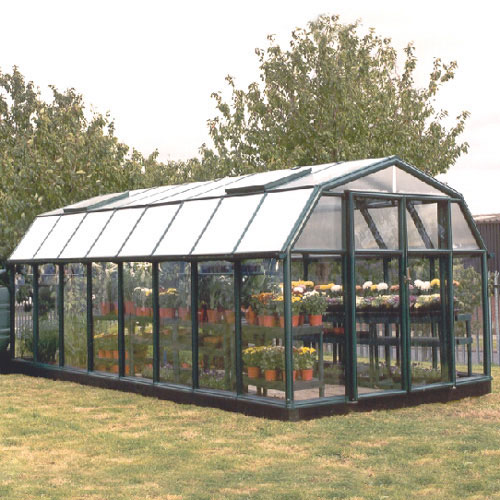Plant breeding and plant production is a very productive hobby and livelihood. It is good way to earn a living by producing high-valued crops. It is also a good way of contributing to the environment. The best way to sustain this endeavor is to get a solar greenhouse. Read on to learn the basics of the solar greenhouse.
What Is a Solar Greenhouse?
The very purpose of any greenhouse is to collect solar energy whenever the sun shining high. However, solar greenhouses serve a more specific purpose. It is able to do more than collect the solar energy. The solar greenhouse is able to store heat that can be used during nighttime, cloudy days or the cold season. It provides adequate heat that the plants will need for their growth even during the night time or the cold seasons.
The good thing about solar greenhouses is that there are choices to choose from and to suit the needs of the owner.
They can stand alone. This is very ideal for big production greenhouses. The freestanding ones are ideal for commercial production. These are used to produce ornamentals or vegetables. They have two primary designs, the shed type and the Quonset type.
The shed-type has a long axis running from the east to the west. It has a south-facing wall glazed to collect maximum amount of the energy from the sun. The north-facing wall on the other hand is very much insulated to avoid heat loss. These features are what contrast a solar greenhouse from the ordinary ones.
The Quonset type can sometimes look like an underground pit. This is a low-cost greenhouse. It has a Quonset-shaped frame and looks like a tunnel. It has a layer or two of plastic film. This can save as much as 40% of the heating fuel.
They can also be merely attached to the greenhouses, very ideal for backyard use. The attached solar greenhouses are structures that form some sort of a room protruding from a house. This is a good space for transplants or herbs.
Passive or Active
The solar greenhouse is classified into two. It can be the passive solar greenhouse or the active. These two makes use of different resources, but still serve a same purpose.
The Passive Solar Greenhouse
In some places, where colder seasons tend to endure longer, there may be a need to resort to passive solar greenhouse, using gas or electric heating system. This is the only way to protect the plants from getting too much cold. This is very ideal for growers as it can still give way to so much productivity despite the conditions. The use of heating systems for greenhouses to be cost-effective is best utilized if there are high-value crops to be produced.
The Active Solar Greenhouse
The active solar greenhouse makes use of supplemental energy. It transfers the solar heated air from the storage area to the other parts of the greenhouse.
Designing a Solar Greenhouse
Most would claim that managing and maintaining an ordinary greenhouse does not differ much with the solar greenhouse. However, there are a number of ways that they differ. These are significant distinctions.
Solar greenhouses, unlike the ordinary ones, have oriented glazing to get utmost solar heat, even during winter. Its materials are designed to minimize loss of heat. It uses heat storing materials. It also has insulation especially useful when there is no sunlight. The solar greenhouse also depends heavily on natural ventilation for cooling during summer.
Solar Heat Storage
This is one main feature in designing a solar greenhouse. To remain warm even during cool nights, there must be sufficient amount of solar heat stored. One common method used to store this energy is to put rocks or concrete directly receiving the sunlight to absorb the heat.
Cinder block walls at the north side of a greenhouse are also used as good heat storage. Dark-colored ceramic floorings can also be used to store the heat. Any wall or flooring not used for heat absorption is supposed to be colored light. This should be designed to reflect the heat and light and distribute it to the plants.
The management of a greenhouse can also determine the amount of heat stored. A greenhouse that is full of plants and structures can store heat easier compared to an empty one. Composts can also complement the heat storage goal as they help produce carbon dioxide in the atmosphere. Furthermore, the microorganisms in the compost also contribute to the increase in plant production.
Some would rely on any structure that would resemble a greenhouse to accommodate the plants. However, to be efficient and cost-effective, aim for the optimum setting in your solar greenhouse.

